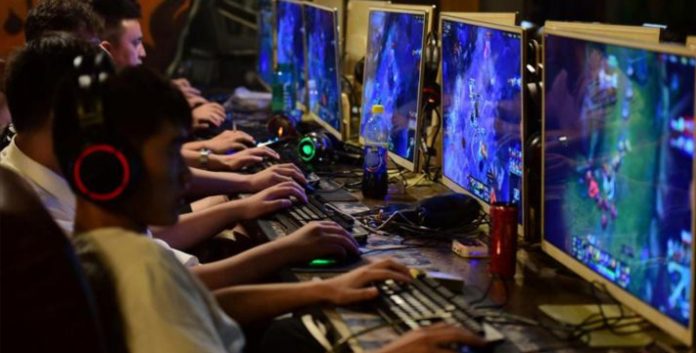Gaming has come a long way since the days of solitary experiences. The advent of multiplayer gaming has revolutionized the industry, allowing players to connect and compete with others from around the world. From the humble beginnings of local co-op to the thriving online communities we see today, the evolution of multiplayer gaming has transformed the way we play, socialize, and build communities. In this article, we will trace the fascinating journey of multiplayer gaming, exploring its milestones, innovations, and the profound impact it has had on the gaming landscape.
1. The Rise of Local Co-op: Friends on the Couch
In the early days of gaming, multiplayer experiences were predominantly confined to local co-op. Friends and family members would gather around a single screen, huddled together on a couch, as they battled against each other or teamed up to overcome challenges in verde casino bonus no deposit. This form of gaming encouraged face-to-face interactions, where players could see each other’s reactions and engage in lively banter. Games like Super Mario Bros., GoldenEye 007, and Street Fighter II created memorable moments and nurtured social interactions within the gaming community.
2. LAN Parties and the Birth of Networked Multiplayer
As technology advanced and personal computers became more prevalent, a new era of multiplayer gaming emerged with the rise of local area networks (LANs). LAN parties became popular, where gamers would bring their computers together, connecting them via network cables. This allowed for larger-scale multiplayer experiences, with games like Quake, Counter-Strike, and Warcraft III leading the charge. The excitement of facing opponents in the same physical space intensified the competitive spirit and camaraderie among players, fostering a vibrant gaming culture.
3. Online Multiplayer: Gaming Without Borders
However, it was the proliferation of the internet that brought about a seismic shift in multiplayer gaming. Online multiplayer enabled gamers to connect with players from across the globe, transcending physical boundaries and opening up a world of possibilities. Games like World of Warcraft, Halo 2, and the Call of Duty series popularized online multiplayer, allowing players to join massive virtual worlds, engage in cooperative quests, or participate in heated competitive battles. The advent of matchmaking systems further streamlined the process of finding opponents and teammates, making online multiplayer accessible to a broader audience.
4. The Emergence of Persistent Online Worlds
Persistent online worlds, or massively multiplayer online games (MMOs), took multiplayer gaming to new heights. Titles like EverQuest, Ultima Online, and more recently, World of Warcraft, offered vast virtual landscapes for players to explore, complete quests, and interact with thousands of other players simultaneously. The sense of community and socialization within these virtual realms gave rise to friendships, guilds, and in-game economies, further blurring the lines between the game and reality. MMOs created opportunities for players to forge lasting relationships, collaborate on epic quests, and experience a sense of belonging within expansive digital universes.
5. The Era of Competitive Esports
Multiplayer gaming has also birthed a competitive scene unlike anything seen before: esports. With games like League of Legends, Dota 2, and Overwatch, professional players compete in tournaments for enormous prize pools. Esports events draw massive audiences, both online and in arenas, showcasing the skill, strategy, and spectacle of multiplayer gaming at its highest level. Esports has become a cultural phenomenon, elevating multiplayer gaming to a legitimate and respected form of competition. It has given rise to professional players, teams, and organizations, fueling the growth of a global industry that continues to flourish.
The evolution of multiplayer gaming has transformed the way we play and connect with others in the gaming community. From the early days of local co-op to the vast online communities and competitive esports scenes of today, multiplayer gaming has evolved to offer diverse experiences, allowing players to forge friendships, test their skills against others, and build vibrant virtual communities. The journey from local co-op to online communities has been driven by advancements in technology, connectivity, and the ever-growing demand for social interaction in gaming.
Looking ahead, the future of multiplayer gaming holds even more exciting possibilities. The advent of cloud gaming services and the integration of emerging technologies like virtual reality (VR) and augmented reality (AR) are poised to revolutionize multiplayer experiences once again. These advancements will enable players to immerse themselves in virtual worlds, interact with others in more lifelike ways, and explore new realms of social connectivity.
Moreover, the concept of multiplayer gaming is extending beyond traditional video games. Social platforms dedicated solely to gaming, such as Discord, have emerged as bustling hubs where gamers can connect, communicate, and join communities centered around their favorite games. These platforms foster a sense of belonging and provide spaces for players to discuss strategies, share experiences, and organize gaming sessions.
Disclaimer: This article contains sponsored marketing content. It is intended for promotional purposes and should not be considered as an endorsement or recommendation by our website. Readers are encouraged to conduct their own research and exercise their own judgment before making any decisions based on the information provided in this article.



































